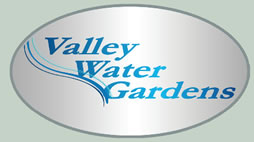Thinking About Building a Water Garden?
The majority of Basic Pond Construction information found will be very similar in many aspects. Studying through this and jotting down the options, technical jargon, etc. that you want to incorporate into your garden will certainly prove invaluable to your garden’s final appearance.
As with any project, location and size are very important (not to mention cost). Always strive to blend your garden into existing landscape and hopefully within close proximity to your home. If there’s no present landscaping (flower beds, trees, shrubs, etc.) try to visualize future landscaping so the current project will blend in with the future additions.
Here are answers to some of the most frequently asked questions by first time pond builders:
Q: Which is easier to install, flexible liner or pre-formed ponds?
A: For the beginner with little or no knowledge the preformed ponds work well. By studying installation techniques, etc. pond liners can and are being installed by first time pond builders and they’re doing an excellent job!
Q: What’s the expected life of flexible liners and pre-formed ponds?
A: Flexible liners: various companies have limited warranties, expect 20 years or more if properly installed, maintained and not exposed to sunlight HDPE Pre-formed ponds: 20 yr. warranty Fiberglass pre-formed ponds: Have lifetime warranties
Q: What is recommended water depth for ponds?
A: Goldfish ponds - 24" + Koi ponds - 36" +
Q: How many gallons of water is my pond going to hold?
A: Multiply surface area in sq. ft. x depth in ft. x 7.5 = total gallons
Q: Are ponds difficult to manage?
A: No. If properly stocked with plants, aquatic life and the pump and filtration systems are sized correctly to total pond area and volume. Routine bacterial seeding is recommended also.
Q: What factors determine the size of filtration system I need ?
A: To name a few: Total surface area, total volume of water, expected nutrient load (size and number of fish)
NOTE: A major problem with many existing ponds is their filtering systems are undersized!
Q: What are the different types of filtration?
A: Mechanical: Polyester Pads, Foam Pads, etc. Removes suspended particles
Biological: Located out of pond: filter media containing a bacterial colony which oxides Ammonia by bacteria of the genus Nitrosomonas into Nitrites, further oxidation by bacteria of the genus Nitrobacter to Nitrates which is consumed by plants and algae. This process is referred to as Nitrification.
Chemical: Activated carbon, carbon pads,etc. Removes pesticides, odors, etc. Ammonia Rocks: Removes ammonia Phosphate Remover: Removes Phosphate & silicate

